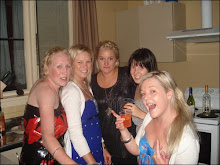Tutorial Two: Digital Camera use and applications
“A new technology is rarely superior to an old one in every feature”. Briefly discuss this statement in relation to digital camera technology. What would you consider to be some of the pluses and minuses digital camera technology holds in relation to more traditional film based cameras?
Positives
The shot you have taken can been seen after its been captured
Can hold a lot more photos
Different settings, i.e. automatic, black and white, sepia, sport etc
Deletes photos automatically
Increase the size of a photo through the cameras settings.
Easier, cheaper option
Negatives
Different shutter speeds
Optical zoom a lot better than digital zoom
More quality, i.e. Lighting, zoom
List some of the ways that digital images can be stored transferred and manipulated using other communications technology.
Digital images can be
Attached to files and then emailed to someone else
Photo shopped through different programmes
Stored onto external/internal hard drives i.e. cds, memory sticks, other computers and laptops
Imported onto websites, chat rooms, blogs etc
Given the prevalence of image capturing devices, and thinking about the issues discussed in tutorial one, consider what sort of ethical issues may arise with their use.
Taking photos of others – this may result in having permission from other people who are involved in the photos before displaying on the web.
This can also be the case when e-mailing to and from.
Briefly discuss some of the ways that digital images could, or are, being used in occupational therapy practice.
Taking photos of houses for enabling funding, equipment installation, giving the OT and other services a visually description of what they environment looks like.
An OT could also take photos of persons movements when completing an activity so then they have more of an idea towards the bodies angles of elevation and posture.
Provide a brief summary of the services offered by Flickr.com
Flickr is an image and video hosting website, web services suite, and online community platform. It was one of the earliest Web 2.0 applications. In addition to being a popular Web site for users to share personal photographs, the service is widely used by bloggers as a photo repository. Its popularity has been fueled by its organization tools, which allow photos to be tagged and browsed by folksonomic means. As of November 2007, it hosts more than two billion images.
Retrieved May 12, 2007 http://en.wikipedia.org/wiki/Flickr
Name one other photo storage website which offers a service similar to Flickr.com
Ringo
Explain what the difference is between a digital and an optical zoom
Digital zoom is a method of decreasing (narrowing) the apparent angle of view of a digital photographic or video image. Digital zoom is accomplished by cropping an image down to a centred area with the same aspect ratio as the original, and usually also interpolating the result back up to the pixel dimensions of the original. It is accomplished electronically, without any adjustment of the camera's optics, and no optical resolution is gained in the process.
Retrieved May 12, 2007 from http://en.wikipedia.org/wiki/Digital_zoom
A zoom lens is a mechanical assembly of lens elements with the ability to vary its focal length (and thus angle of view), as opposed to a fixed focal length (FFL) lens. They are commonly used with still, video, motion picture cameras, projectors, some binoculars, microscopes, telescopes, and other optical instruments.
Retrieved May 12, 2007 from http://en.wikipedia.org/wiki/Optical_zoom
Explain what is meant by the term mega pixel
Number of individual pixels that go into making each image.
One mega pixel equals to one billion pixels
Pixels contain the light in a photo
Subscribe to:
Post Comments (Atom)


No comments:
Post a Comment